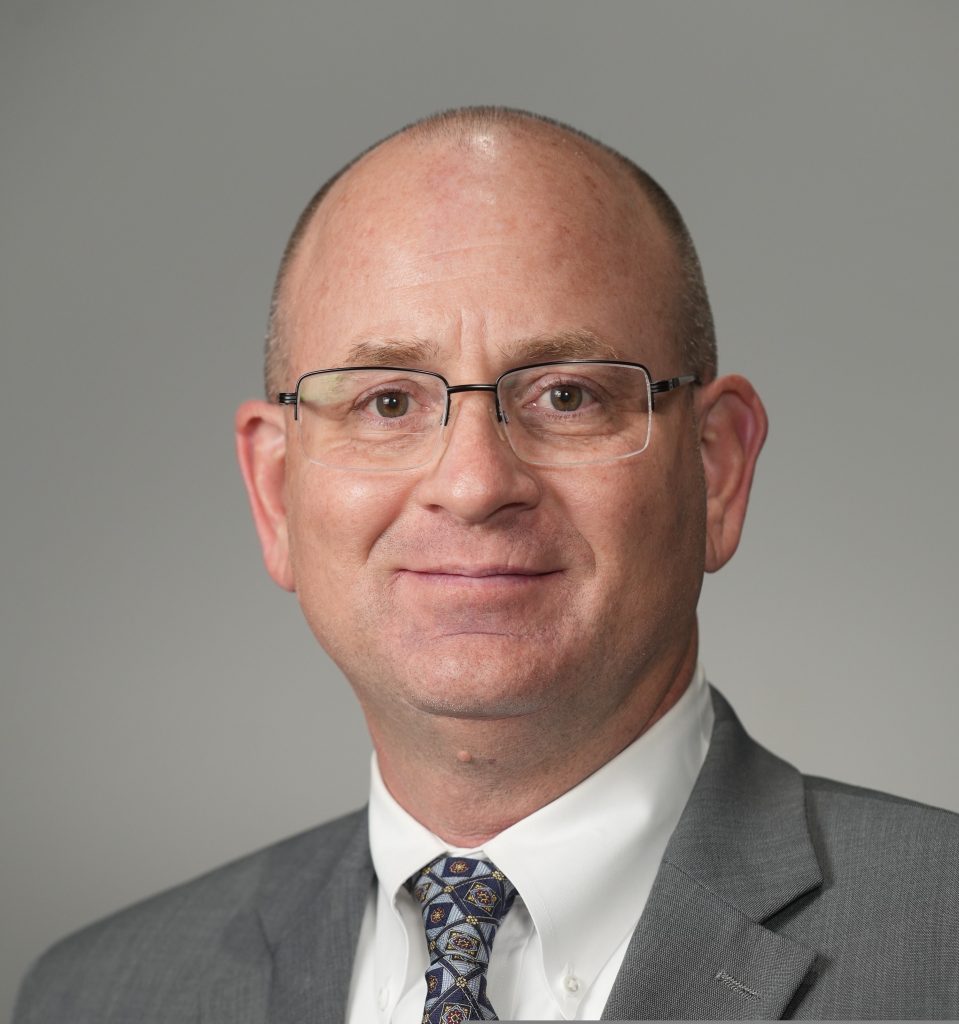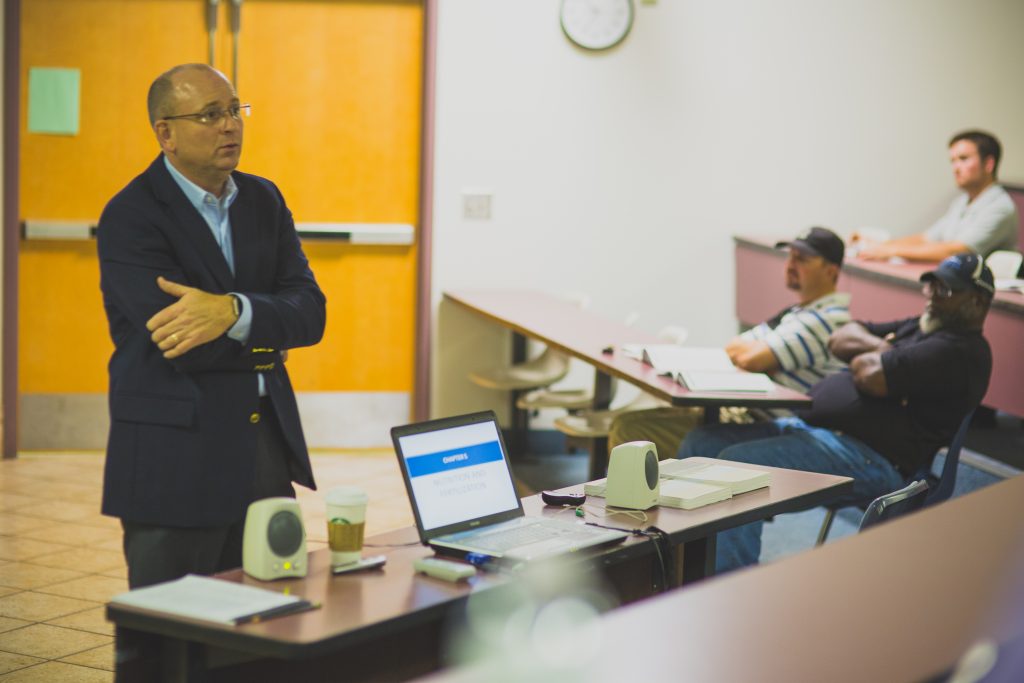J. Bryan Unruh Ph.D.
Professor and Associate Director
University of Florida
Institute of Food and Agricultural Science,
West Florida Research and Education Center
Golf is facing a range of impactful challenges in the 21st century. Growing the game has become a rallying cry amongst the sport’s major organizations. Beyond the desire to add more players is another dimension that has even greater ramifications.
Can golf play a positive role as a friendly contributor in the ever-changing dynamics with the environment? Can stakeholders within the sport foster a lasting dialogue with outside groups who often see golf as a “taker” of natural resources and thereby squandering them on what they deem as a frivolous hobby. Dr. J. Bryan Unruh is on the front lines in not only shaping the debate but advocating critical long-term solutions.
The present debate is not whether climate change is real but how serious it inevitably will become without proactive steps being taken. The maintenance of golf courses is a far more intricate matter today than in years past and the growing complexity mandates state-of-the-art practices.
Demonstrating golf is a long-term partner is central in cultivating the game’s growth. Working in tandem with the broader environmental community requires engagement of new practices that lend themselves to sustaining the game in a multiple of ways.
Keeping the communication lines open and active is a foremost priority.
Dr. J. Bryan Unruh is one of the foremost leaders in raising the bar on how golf and the environment can successfully link together. The daily application of meaningful and timely information is now an essentiality and Dr. Unruh outlines in the interview below what the sport faces today and in the years to come.
***
BACKGROUND:
Dr. J. Bryan Unruh is a Professor of Environmental Horticulture at the University of Florida, IFAS, West Florida Research and Education Center, where he has held a faculty position since 1996. Dr. Unruh received his Ph.D. in 1995 from Iowa State Univ. and his M.S. and B.S. degrees from Kansas State Univ. in 1991 and 1989, respectively.
Dr. Unruh’s turfgrass science research and extension program focuses on water quality and quantity, pest management, and new cultivar development. Results from his team’s work are included in all three Florida turf industry Best Management Practice (BMP) manuals.
Dr. Unruh also serves as the primary educator for the Golf Course Superintendents Association (GCSAA) BMP initiative, and he is currently working on the GCSAA Golf Course Environmental Profile survey series.

THE J. BRYAN UNRUH STORY:
At a very early age, I, like many kids, starting mowing lawns to earn spending money. I continued this endeavor through high school but never intending turf management as a career; I desired to be an attorney. The time came to enter college and I had decided that the time necessary to earn a law degree was too long and I really didn’t want a “desk job” – so I declared horticulture as my major at Kansas State University. Ironically, I was in school for 10.5 years and largely have a desk job today.
While in college, I found that most turf students pursued golf course management, so I reached out to Philip “Stan” George, then superintendent at Dodge City (KS) Country Club, requesting a summer job. That summer job changed my outlook on a lot of things – especially my commitment to apply myself to my studies so that I didn’t have to rake pine needles out from under trees for the rest of my life! My interest in turfgrass management grew and I applied for and was awarded a scholarship from Heart of America Golf Course Superintendents Association which I used to attend my first scientific conference – the Crop Science Society of America in Anaheim, CA.
It was there I was exposed to the science behind turfgrass management, and I got to meet the authors of the textbooks I studied from. This ultimately led me to pursue my Master of Science degree under the direction of Dr. Roch Gaussoin at Kansas State University and then on to Iowa State University where I earned my Ph.D. under the direction of Dr. Nick Christians. Within weeks of finishing my Ph.D., I started my position at the University of Florida.
With its abundance of golf courses intertwined into sensitive ecosystems, Florida was in need of comprehensive Best Management Practices, and I was fortunate enough to be part of the group that developed them. Science evolves which means best management practices evolve as well. It’s a never-ending process and I’m fortunate to be a contributor to the process – not only in Florida but also across the United States of America.
***
You were just honored by the GCSAA with the President’s Award for Environmental Excellence. What was your first reaction when told?
I was a bit taken back and I stammered with my words! The caller ID revealed the incoming call was from California. Thinking it was likely a telemarketer, I almost didn’t answer.
Upon answering, GCSAA President Kevin Breen, Certified Golf Course Superintendent at La Rinconada Country Club in Los Gatos, California identified himself and said “Congratulations!”.
I think I simply said, “Well, thank you.” And then my mind was flooded with the “why me” thoughts. There are so many deserving people in this industry that have contributed greatly – why did they choose me?

You’ve personally been on the front lines in developing best practices for golf facilities — notably beginning in Florida — the State with the most golf facilities in the USA. How successful, in your mind, have such facilities been in implementing such practices?
This is a very tough question and one that a collective team is wrestling with presently. We’ve been tremendously successful in moving the BMP initiative forward – all 50 states in the U.S. now have guiding documents on how to best manage golf courses – and that goal was accomplished in only three years.
But having a book on the shelf doesn’t necessarily equate to implementing the practices. Every golf facility should now set goals for resource conservation – be it water, nutrients, pesticides, or energy. And these goals need to be S.M.A.R.T. (specific, measurable, achievable, relevant, and time bound) to be meaningful.
Awareness of the environment is a topic of immense interest — to golfers and non-golfers alike. What grade do you see the golf industry earning for its efforts in educating those not connected to the sport about the proactive efforts it is doing?
When I used to teach in the classroom, I was asked if I “graded on the curve” (I didn’t). That said, I would give the industry a “C” for an average job. Communication in today’s era is quite challenging – especially to the disconnected who do not have a vested interest in a particular subject (i.e., golf).
However, these same people may have an interest in “protecting the environment” or “conserving water or habitat” or “protecting pollinators” and they are often targeted with “anti-golf” campaigns filled with misinformation. As such, the golf course management industry has the daunting task of helping the disconnected “unlearn” misinformation.

Water is becoming more and more a central emphasis point. There have been calls for non-essential users such as golf facilities to make cutbacks — possibly anywhere from 25 to 50 percent. Is such a pullback of water usage possible and what impact would it have on golf facilities overall?
Great question with complex answers that have additional questions embedded in them. Are reductions needed? Absolutely! Who gets to define “essential” vs. “non-essential”? What are the ecosystem service trade-offs of eliminating or reducing water use for golf?
A better approach than blanket percentage reductions is to focus on enhancing water use efficiency which is measured by unit volume/unit area. Can we increase efficiency – you bet. And there are a lot of ways to do that, but one size does not fit all.
Breeding and planting water conserving turfgrasses, use of soil amendments and surfactants, increasing irrigation system efficiency, and reducing irrigated acres are just a few of the many options available. Interestingly, golf courses in the Southwest U.S. are considerably larger than elsewhere and they use a disproportionate amount of water due to climatic conditions. Their water conservation strategies should be very different than the Southeast U.S. where abundant rainfall is less than effective due to the low water holding capacity of sandy soils.
Can organized environmental groups be convinced golf is a good steward of critical natural resources? What additional steps need to be taken?
There are good examples of where golf antagonists, often as individuals and not necessarily collectively, come to see the value of a golf course. This often occurs through the deliberate interactions golf course superintendents have with those who oppose the game.
This engagement generally centers on shared goals such as habitat restoration (e.g., Monarchs in the Rough), wildlife protection, and greenspace preservation. Additional effort in public engagement is vitally important in building mutually beneficial and productive relationships.
You are now involved with a groundbreaking project to develop a comprehensive environmental profile of golf courses in the United States. Where do matters stand at this moment and how impactful do you see this being with those at the State and Federal regulatory areas?
The profiles provide the necessary industry benchmarks that show where progress has been made and where additional effort is needed. Without the benchmark, we can only guess what is being done. I tend to prefer the carrot versus the stick when it comes to eliciting change. But it likely requires a bit of both in order to move the mark.
For example, phosphorus regulations in the U.S. resulted in reduced tonnage applied to golf courses early on. Recent data, however, suggests that although restrictions have declined, phosphorous applications continue to decline. This is likely a case where the majority cautiously watched those impacted by regulation and upon realization that the golf course was fine without supplemental phosphorous, they followed suit.
The biggest misconception non-golfers have about golf courses in general is what?
The non-golfing public generally feels that golf courses are bad for the environment, and they fail to realize the tremendous benefits they bring to the environment; especially the urban environment that is often denuded of natural resources and covered with impervious surfaces.
If you could change one thing in golf unilaterally – what would it be and why?
Inextricably linked to the game of golf is turfgrass – and many are convinced that turfgrass is bad for the environment. Turfgrasses are just plants and the plants themselves do not use too much water, nutrients, or pesticides.
As such, I want people to view turfgrasses — and golf — positively due to the tremendous benefits they provide.
Curious to know – when you visit a golf course — what’s the first thing you notice?
Details. I’m a bit OCD and I see detail or the lack of. The superintendent I worked for drilled into us that doing things right – setting the pin plumb, lifting bunker rakes up before exiting the bunker so you don’t drag sand out, mowing straight lines, proper tee marker alignment – aren’t costly to do but they make the difference between good and great.
Coincidently, this hasn’t been good for my game as I have a hard time focusing on and remembering where I hit the ball.

Best advice you ever received — what was it and who from?
“Speak less and say more.” – Dr. Jerry Young, Professor at Iowa State University, who served as a “life” mentor. This is tremendously hard to master.
***
For more info about J. Bryan Unruh go to:
WHAT'S YOUR REACTION?

